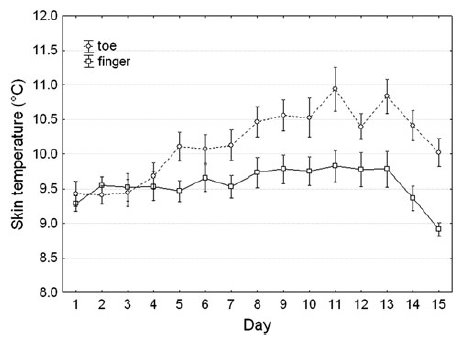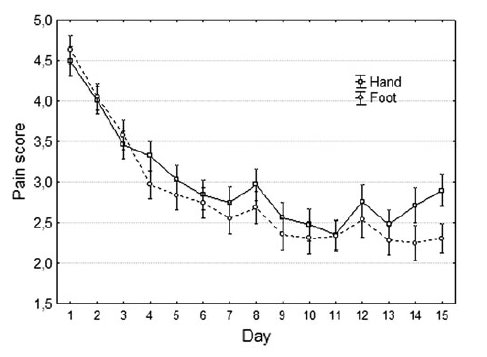Training your fingers and toes to withstand cold
Sport science blogger Alex Hutchinson looks at freezing fingers and toes. After prolonged exposure, they may hurt less -- but that's not necessarily good news.
Winter’s coming, so here’s a topical study just published in the European Journal of Applied Physiology. Do your fingers and toes gradually adapt to being exposed to cold temperatures? There are three questions we can ask:
Are the digits able to maintain a higher temperature when they’re exposed to cold?
Are the digits quicker to experience “cold-induced vasodilation” (CIVD)? (When you get cold, your blood vessels contract; but after a certain point, the vessel walls get so cold that they can’t stay contracted, so you get a sudden rush of blood that helps to warm up your fingers and toes — which turns out to be a very useful response to avoid frostbite.)
Do your digits hurt less?
Over the years, many researchers have tested whether our digits adapt to cold, and the results are all over the map — some see a positive effect, some see a negative effect, some see no effect. Into the breach come researchers from the Netherlands and from Brock University in Canada. They took 16 suckers volunteers and had them dip their right hand and foot in 8 C water for 30 minutes at a time for 15 consecutive days. At the beginning and end of the experiment, the “trained” hand/foot was compared to the “untrained” hand/foot.
Here’s how skin temperature changed over the 15 days:

The data kind of meanders around, but there’s not much of a clear trend. Unfortunately, there was a clear trend for CIVD: during the pre-training test, 52% of subjects experienced CIVD; during the post-training test, only 24% experienced it.
And finally, the pain score:

On the surface, this might seem like good news: it hurts less as you gradually become accustomed to the unpleasant sensation of being cold. In fact, though, this is bad news. As your body gets used to the cold, you notice it less, but you also are less likely to get the warming effects of CIVD. Combine these two factors, and you become increasingly likely to get frostbite without realizing it.
So what does this mean? Well, it probably ends my dreams of being a polar explorer. I have extremely poor circulation in my fingers, and this suggests that this is unlikely to improve no matter how often I freeze my fingers off. So, despite the odd looks I get, I’m going to continue to run in my big puffy mittens whenever it gets close to freezing, because I won’t get any long-term “training” benefit from suffering.
(Alex Hutchinson is a senior editor at Canadian Running and blogs about sport science at runningmagazine.ca and sweatscience.com. This article also appears on the Canadian Running website.)
